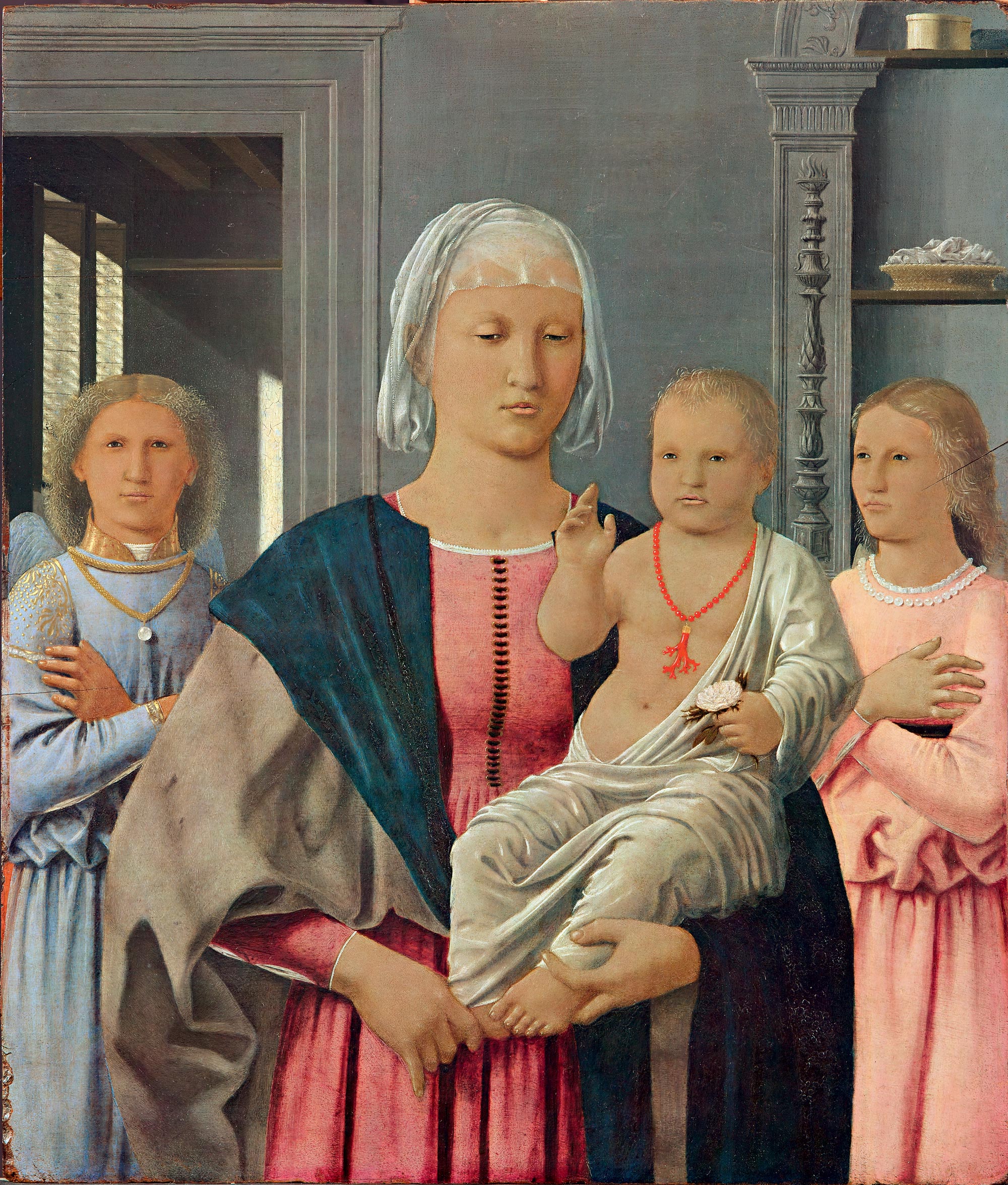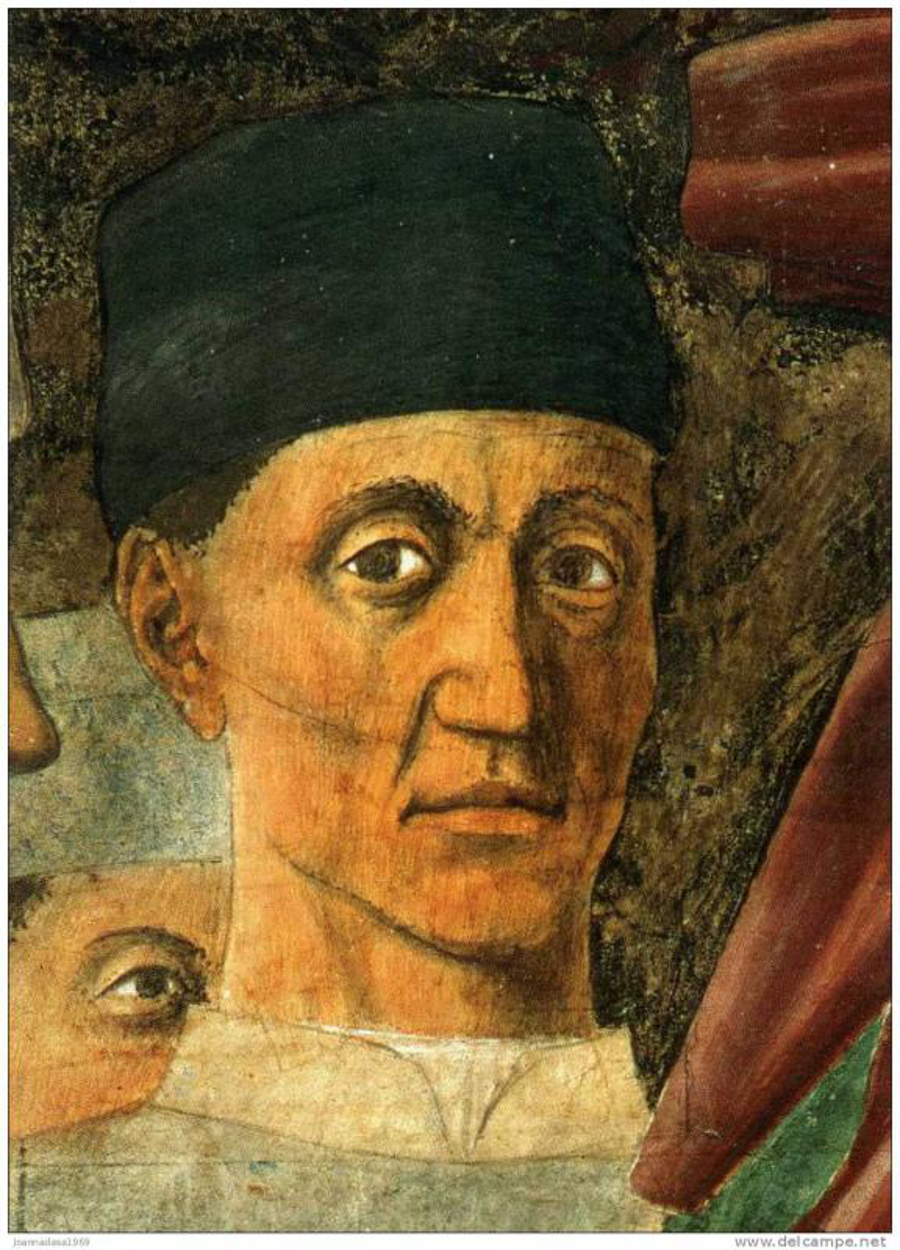Piero della Francesca was a mysterious artist of the Early Renaissance. As testified by Giorgio Vasari in his Lives of the Most Excellent Painters, Sculptors and Architects, to contemporaries he was also known as a mathematician and geometer. Nowadays, Piero della Francesca is chiefly appreciated for his art. His painting is characterized by its serene humanism, its use of geometric forms and perspective. From its small scale the painting was probably intended for private devotion. It was noticed for the first time in 1822 in the church of the Observant Franciscan convent of Santa Maria delle Grazie just outside Senigallia (Marche), whence the current name. Senigallia was wrested from Sigismondo Malatesta by Federico Montefeltro: both men were patrons of Piero.
The commission was likely from or on behalf of Giovanni Della Rovere, betrothed in 1474 to Giovanna Montefeltro, at which time Federico made Giovanni Lord of Senigallia. Following its rediscovery the painting was taken to the Ducal Palace, Urbino. The 1990s restoration showed the high quality of Piero della Francesca's treatment of light, as well as the influence of Flemish masters on it, both in its oil-on-panel medium and in details such as the basket with linen gauze, the coral, and the fabric covering the Madonna's head. The light, which realistically enters from the window on the left, is a symbol of the Virgin's conception. The linen in the basket is an allusion to her purity, while the case for hosts on the shelf and the necklace and pendant of coral worn by the infant Jesus both hint at the Eucharistic sacrifice. The staring, thoughtful immobility of all the characters would also be an allusion to the coming sacrifice.


 Piero della Francesca
Piero della Francesca